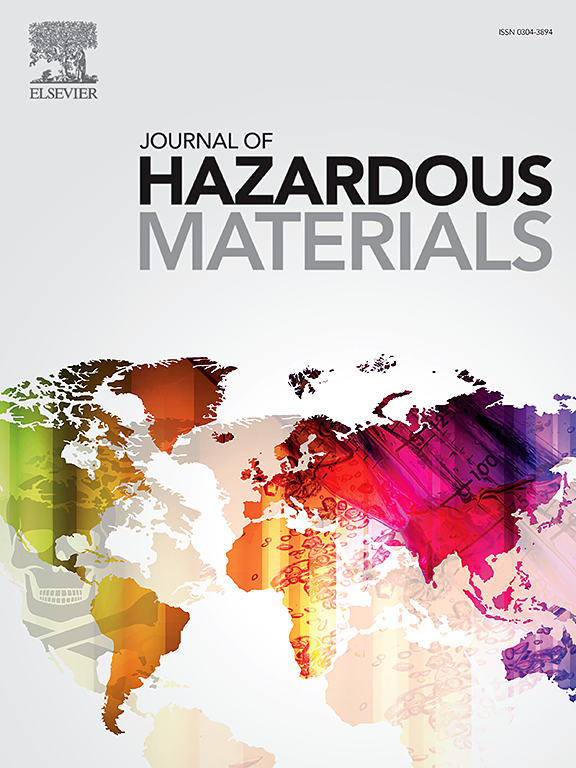预测砷的生物可及性:一种全球数据驱动的机器学习方法及其对减少碳排放的意义
IF 12.2
1区 环境科学与生态学
Q1 ENGINEERING, ENVIRONMENTAL
引用次数: 0
摘要
特定地点的砷生物可及性数据可以提高健康风险评估的准确性,但直接测量既昂贵又耗时。即使在可用的情况下,诸如平均值之类的测量值仍然产生低于自然背景水平的补救目标,限制了它们的实际使用。现有的预测模型,包括线性回归和一些机器学习(ML)方法,通常依赖于人工添加或有限的高砷浓度的现场老化样本,从而降低了它们的泛化性。从20世纪90年代以来的研究中,编制了1458个关于田间老化土壤As生物可及性的记录的全球数据集,涵盖了广泛的As浓度(As- t)和土壤性质。胃生物可及性呈对数正态分布,平均值为23.4%。在8个ML模型中,随机森林(Random Forest, RF)模型表现最好(R²= 0.86,RMSE = 0.58)。As-T解释了73.2%的差异,与铁、锰、有机碳和ph之间存在显著关系。应用于中国西南地区一个受污染的烧结场地,基于rf的概率风险评估得出的修复目标比现行标准高3倍,土壤修复量和碳排放减少了79.1%。这项研究强调了机器学习在提高风险评估准确性和支持更可持续的场地修复策略方面的潜力。本文章由计算机程序翻译,如有差异,请以英文原文为准。

Predicting Arsenic Bioaccessibility: A Global Data-Driven Machine Learning Approach and Its Implication for Reducing Carbon Emissions
Site-specific arsenic (As) bioaccessibility data can improve the accuracy of health risk assessments, but direct measurements are costly and time-consuming. Even when available, measured values such as the mean still yield remediation targets below natural background levels, limiting their practical use. Existing predictive models, including linear regressions and some machine learning (ML) approaches, often rely on artificially spiked or limited field-aged samples with high As concentrations, reducing their generalizability. A global dataset of 1,458 records of As bioaccessibility in field-aged soils from studies since the 1990s were complied, covering a wide range of As concentrations (As-T) and soil properties. Gastric bioaccessibility showed a log-normal distribution with a mean of 23.4%. Among eight ML models, the Random Forest (RF) model performed best (R² = 0.86, RMSE = 0.58). As-T explained 73.2% of the variance, with significant relationships observed with Fe, Mn, organic carbon, and pH. Applied to a contaminated sintering site in southwest China, the RF-informed probabilistic risk assessment yielded a remediation target three times higher than current standards and reduced soil remediation volume and carbon emissions by 79.1%. This study highlights the potential of ML to enhance risk assessment accuracy and support more sustainable site remediation strategies.
求助全文
通过发布文献求助,成功后即可免费获取论文全文。
去求助
来源期刊

Journal of Hazardous Materials
工程技术-工程:环境
CiteScore
25.40
自引率
5.90%
发文量
3059
审稿时长
58 days
期刊介绍:
The Journal of Hazardous Materials serves as a global platform for promoting cutting-edge research in the field of Environmental Science and Engineering. Our publication features a wide range of articles, including full-length research papers, review articles, and perspectives, with the aim of enhancing our understanding of the dangers and risks associated with various materials concerning public health and the environment. It is important to note that the term "environmental contaminants" refers specifically to substances that pose hazardous effects through contamination, while excluding those that do not have such impacts on the environment or human health. Moreover, we emphasize the distinction between wastes and hazardous materials in order to provide further clarity on the scope of the journal. We have a keen interest in exploring specific compounds and microbial agents that have adverse effects on the environment.
 求助内容:
求助内容: 应助结果提醒方式:
应助结果提醒方式:


